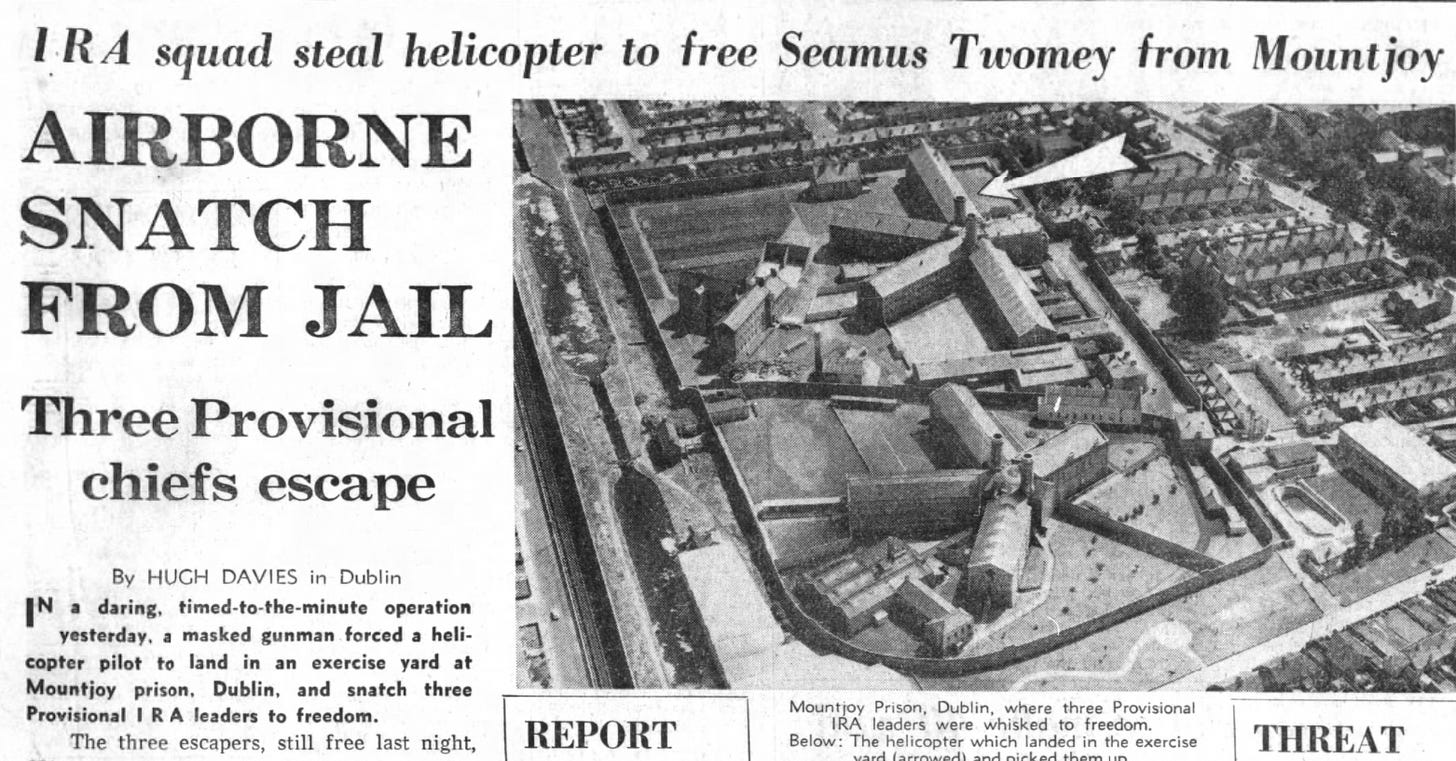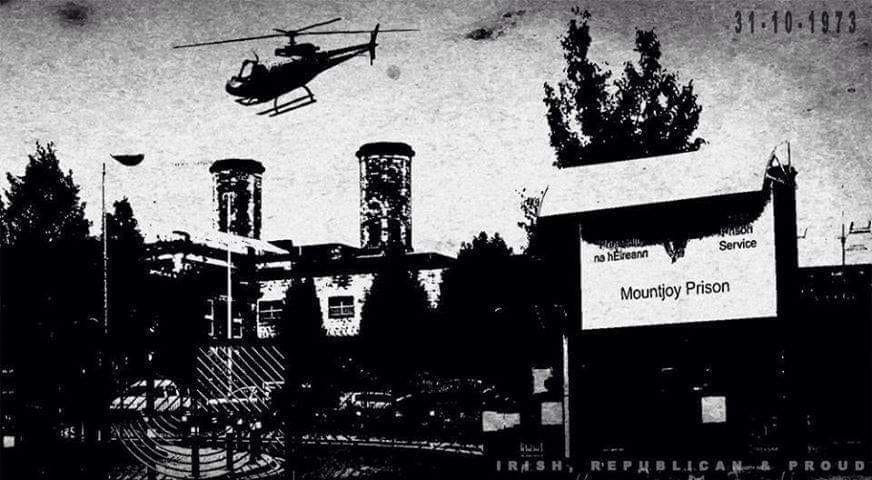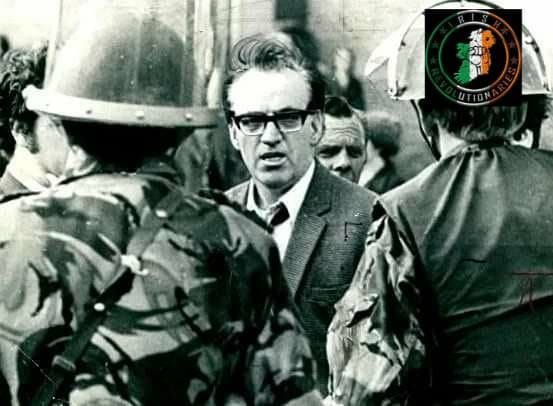"Get to the Chopper!": The Incredible Tale of the Mountjoy Prison Helicopter Escape
On Halloween Day 1973, members of the Irish Republican Army (IRA) orchestrated a daring helicopter prison break for three of its incarcerated leaders
Background
On October 31st, 1973, Mountjoy Prison in Dublin, Ireland, became the scene of one of the most daring prison escapes in history. This prison was home to numerous members of the Provisional Irish Republican Army (IRA), including several high-ranking officials.
The intense political pressure created tension in the prison population, with other prisoners fearing a potential attack from the IRA in an attempt to free their members from captivity. The prison doubled down on security measures, but even their best effort was not enough to stop the larger-than-life escape.
A Bold Plan
The IRA, desperate to free their leadership, put forward a bold and unconventional plan. Typically, prison escapes happen when inmates dig secret tunnels, bribe guards, or take advantage of the chaos during a prison riot to slip out undetected. Rather than using these traditional means, the IRA devised a plan that sounded like it came straight from a Hollywood movie:
They would evacuate their leaders via a daring helicopter rescue.
The IRA sent a member posing as a film director to rent an Aérospatiale Alouette II helicopter, claiming he wanted to use it to scout locations for an upcoming movie. Once in the air, the helicopter was hijacked by IRA members who threatened pilot Thompson Boyes at gunpoint.
They then forced Boyes to fly to Mountjoy Prison, where he was to land in the exercise yard, where Twomey, O’Hagan, and Mallon would be waiting for their lift.
The plan required precision and careful attention to detail. The IRA had to coordinate with their members on the inside to ensure the three leaders would be in place in the yard at the correct time. Even a minute or two late, and the entire plan would crumble.
The prisoners were in the exercise yard watching a football match when the helicopter began its descent. Though one of the guards spotted the chopper, he did not react, believing that it contained Ireland’s Minister of Defence.
Suddenly, the prison’s guards were surrounded and attacked by inmates as the helicopter made its landing. In the confusion, IRA Chief of Staff Seamus Twomey and senior members J.B. O’Hagan and Kevin Mallon boarded the chopper and made their escape.
The guards attempted to fire on the helicopter, but it was too late.
The helicopter then flew to another area of the city, where the pilot was released unharmed, and the three escaped prisoners were then shuffled through a network of IRA safe houses to keep them protected from being recaptured.
Public Embarrassment
Just like that, three of the most high-profile inmates of Mountjoy Prison had vanished into thin air in broad daylight.
This bold and shocking escape was a severe embarrassment for the Irish government, which had failed to keep these high-profile prisoners secure. A massive manhunt immediately followed the escape.
Over 20,000 members of the Irish Defence Forces and the Gardaí participated in the search. Despite their best efforts, the IRA’s impressive level of coordination and organization thwarted the government’s attempts to locate the inmates.
The Irish government faced substantial scrutiny in the aftermath of the escape. To bolster failing confidence in the prison system, the Irish government quickly enacted wide-sweeping reforms to enhance prison security, including preventative measures to block future aerial escapes.
Authorities meticulously investigated leads to understand how this escape had been executed and attempted to identify all participants involved. Unfortunately, the IRA was rather thorough in covering their tracks, and the investigations produced little evidence.
Aftermath
Kevin Mallon was captured in December 1973 and later escaped during a mass breakout in August 1974. He was then recaptured in January 1975. J.B. O’Hagan was arrested in early 1975. He was given an additional two-year sentence for his escape.
Seamus Twomey managed to evade capture until December 1977, when he was recaptured in Dublin. He served the remainder of his sentence and was released in 1982.
Legacy of Defiance
The Mountjoy Prison escape became a symbol of the IRA’s defiance and resourcefulness. To the IRA’s members and sympathizers, this escape served as a triumphant victory in the face of British and Irish authoritative control.
To their opponents and enemies, it was a harsh reminder that the IRA can and will challenge the power of the state, even from behind bars.
The high-stakes escape remains a defining moment in the history of Ireland and has captivated historians and true crime enthusiasts alike. The story serves as a stark reminder of a volatile era when even high-security prisons were not enough to hold those who were determined and defiant enough to escape.
Sources:
An Phoblacht. “Helicopter Escape from Mountjoy Prison: A Republican Triumph.” Republican News, 2022, https://republican-news.org/current/news/2022/11/helicopter_escape_from_mountjo_1.html.
BreakingNews.ie. “Man Behind Helicopter Hijacking That Airlifted IRA Prisoners Out of Mountjoy Shares Story.” Breaking News, https://www.breakingnews.ie/ireland/man-behind-helicopter-hijacking-that-airlifted-ira-prisoners-out-of-mountjoy-shares-story-1181666.html.
The Independent. “The Indo Daily Revisited: The Mountjoy Prison Helicopter Escape and the Manhunt That Followed.” Independent.ie, https://www.independent.ie/podcasts/the-indo-daily/the-indo-daily-revisited-the-mountjoy-prison-helicopter-escape-and-the-manhunt-that-followed/a1649976464.html.
Wikipedia contributors. “Mountjoy Prison Helicopter Escape.” Wikipedia, Wikimedia Foundation, https://en.wikipedia.org/wiki/Mountjoy_Prison_helicopter_escape.












